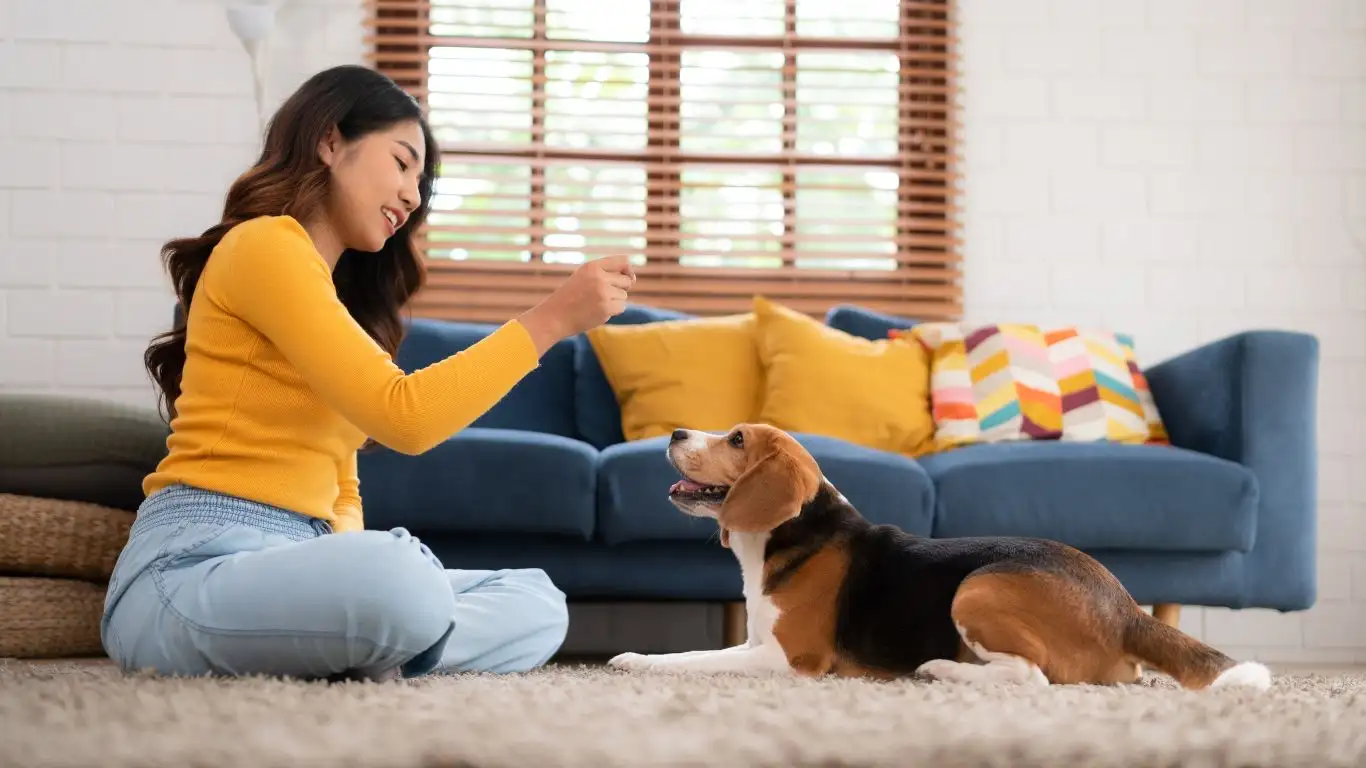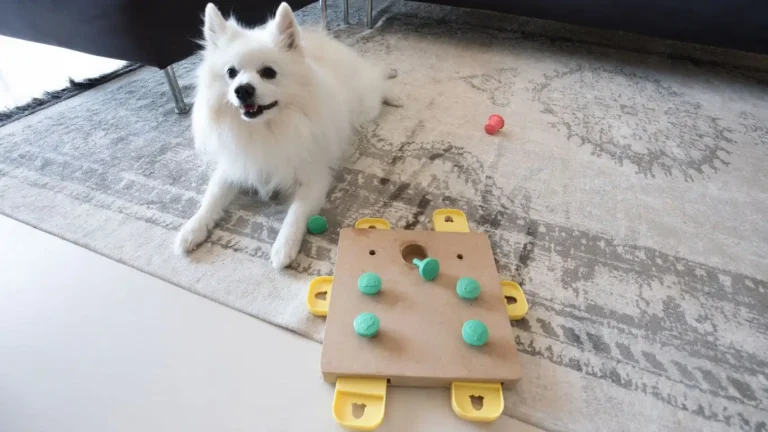Master How to Train a Dog to Stop Climbing on Furniture
As a Canine-Assisted Therapy Trainer with years of experience, I’ve seen firsthand how challenging it can be when a dog keeps climbing on furniture. Whether you have a large, rambunctious dog or a small, curious pup, this behavior can become a serious issue in your household. Not only does it create chaos, but it can also damage your furniture or lead to other undesirable habits. The good news is that with the right training techniques, you can teach your dog how to stop climbing on furniture. In this post, I’ll walk you through effective steps that will help you get your dog under control in a way that’s respectful and positive for both you and your pet. If you’ve been wondering how to train a dog to stop climbing on furniture, keep reading – we’ve got plenty of practical advice coming your way!
Understanding the Root Cause of Furniture Climbing
Before diving into the training process, it’s important to understand why your dog is climbing on the furniture in the first place. As with most dog behaviors, the reasons can vary greatly depending on your dog’s age, personality, and experiences. Often, dogs climb on furniture because they see it as a place of comfort, safety, or even dominance. Some dogs might just want to be closer to their favorite humans, while others might hop up to enjoy the view or simply get a better spot to rest. In some cases, it could even be a response to stress or anxiety.
Is It a Behavioral Issue or a Comfort Habit?
Dogs, especially puppies, naturally gravitate toward high spots like furniture for a few reasons. For one, the height provides a better vantage point, and second, it offers comfort and warmth. If your dog has started climbing on the couch, bed, or other furniture, they might simply be seeking out a cozy, soft spot. This is particularly common with dogs that have grown accustomed to being allowed up on the furniture in the past.
However, if your dog seems to be using the furniture as a way to exert dominance, the behavior can become more problematic. In this case, they might be trying to claim space, and it could require more consistent training to change their behavior. Understanding why your dog is climbing on furniture is the first step to correcting the behavior, as it will inform how you approach the training process.

How to Train a Dog to Stop Climbing on Furniture: First Steps
Now that we’ve covered the reasons behind your dog’s behavior, let’s talk about the steps you can take to teach them to stay off the furniture. Keep in mind that consistency is key. You won’t see results overnight, but with patience and the right approach, your dog will learn to respect the boundaries you set. Here’s how to get started:
Step 1: Establish Clear Boundaries
The first and most important thing you can do is set clear boundaries. If you don’t want your dog on the furniture, they need to understand that it’s off-limits. This means you should not allow your dog to climb on furniture at any time, even if they seem to be behaving well in the moment. It can be tempting to let them cuddle with you on the couch or nap on your bed, but this inconsistency sends mixed signals to your dog. Stick to your rules, and make sure everyone in your household is on the same page.
One way to establish boundaries is to use a consistent command, like “Off” or “Down,” every time your dog tries to jump up. When they respond to the command, offer a reward—such as praise, treats, or playtime. Positive reinforcement will encourage your dog to listen to you and understand that the furniture is not a place they can freely access.
Step 2: Create a Comfortable Alternative
If you’re taking away a cozy spot like the couch or bed, you need to give your dog an alternative. A comfortable bed or designated spot on the floor will give your dog a place to relax without the temptation of climbing on the furniture. Choose a spot in the room where your dog can still be close to you but without the desire to jump on your lap or the furniture. Be sure to make this alternative space inviting with soft bedding, toys, and maybe even a blanket that smells like you.
Using positive reinforcement, you can encourage your dog to relax in their designated space. Whenever your dog goes to their bed, praise them and give them a treat. This helps reinforce that their bed is a great place to be.

Addressing Behavioral Challenges
In some cases, simply taking a no-tolerance approach to furniture climbing may not be enough. If your dog is persistent or shows signs of anxiety or dominance, the issue might be deeper than just a comfort preference. These behaviors can often be linked to stress, anxiety, or a lack of structure in their daily routine.
Step 3: Redirect the Behavior
If your dog continues to try climbing on furniture after you’ve set clear boundaries, it’s time to redirect the behavior. For example, when your dog tries to jump on the couch, immediately use your “Off” command and then guide them to their bed or another space you’ve designated for them. Offer them a treat or toy as a reward for staying in their new spot.
Redirection is a powerful technique because it gives your dog a chance to focus their energy on something else. The key here is to be proactive, not reactive. Watch for signs that your dog might try to jump up and intervene before they actually do it. Over time, your dog will learn that staying in their designated spot is a better option than getting up on the furniture.

Understanding the Importance of Consistency
One of the most important aspects of training your dog is consistency. Training your dog to stop climbing on furniture requires consistent reinforcement of boundaries, commands, and rewards. If you’re inconsistent, your dog won’t understand what’s expected of them, and the behavior is likely to continue. Be patient, stay firm, and remember that positive reinforcement is key. Over time, your dog will learn that furniture is off-limits, and they’ll be much less likely to jump up without permission.
It’s important to remember that this process takes time. Dogs are creatures of habit, and breaking old patterns requires dedication. Don’t get discouraged if you don’t see immediate results. With patience and consistency, you’ll be able to teach your dog how to stop climbing on furniture, and you’ll both be much happier in the long run.
Using Positive Reinforcement to Encourage Good Behavior
Now that you’ve set clear boundaries and provided an alternative space for your dog, it’s time to focus on reinforcing the behavior you want to see. Positive reinforcement is a powerful tool that can help you train your dog to stop climbing on furniture. This approach involves rewarding your dog for exhibiting the behaviors you want, like staying in their bed instead of jumping up on the couch.
The Power of Treats and Praise
One of the most effective ways to encourage good behavior is through the use of treats. When your dog successfully stays off the furniture or goes to their designated bed, reward them immediately with a treat. The key here is timing – make sure to give the reward right after they’ve displayed the desired behavior. This helps your dog connect the reward with the action.
In addition to treats, verbal praise and affection are also great tools. A simple “Good job!” or “Well done!” can reinforce your dog’s positive behavior. It’s important to offer praise every time they stay off the furniture or follow your commands, so they learn that good things happen when they follow your rules.
Remember, consistency is vital. If you reward your dog inconsistently, it can confuse them. Stick to rewarding only when they follow the rules, and over time, they will begin to associate staying off the furniture with positive outcomes.

Dealing with Persistent Behavior and Relapses
Despite your best efforts, you might notice that your dog continues to climb on the furniture even after you’ve set boundaries and started using positive reinforcement. This is a normal part of the training process. Dogs, like people, sometimes experience setbacks, especially if they’re used to a certain behavior.
What to Do When Your Dog Relapses
If your dog tries to jump on the furniture again, don’t get discouraged. Instead, stay calm and consistent with your training. The key is to reinforce the rules every time, no matter how many times your dog tests them. If you notice your dog sneaking onto the furniture when you’re not around, redirect them immediately when you catch them in the act. Saying “Off” firmly and guiding them to their bed will remind them of the boundaries you’ve set.
In some cases, it might help to take a more proactive approach. If your dog is constantly trying to get on the furniture when you’re not paying attention, consider using barriers or crates. You can keep your dog in an area where the furniture isn’t accessible or crate them when you’re not home. Over time, this will help reduce the temptation to climb on the furniture when unsupervised.
Be Patient and Stay Consistent
Training a dog isn’t a one-time fix – it’s a journey that requires patience. It’s important to stay consistent with your commands, redirection, and rewards. If you feel frustrated at times, remember that your dog is still learning, and setbacks are a natural part of the process.
In my own experience as a Canine-Assisted Therapy Trainer, I’ve worked with plenty of dogs who’ve tested boundaries more than once. But with persistence and consistency, every dog can learn the rules. Your dog might need a little more time, but as long as you stay positive and patient, you’ll start to see results.

Incorporating Fun and Engaging Activities for Better Focus
Sometimes, dogs climb on furniture because they have excess energy or are bored. To prevent this behavior, it’s essential to give your dog plenty of mental and physical stimulation. When dogs aren’t mentally challenged or don’t get enough exercise, they often resort to undesirable behaviors, such as furniture climbing, out of frustration or boredom.
Interactive Playtime and Exercise
Make sure your dog is getting enough physical exercise each day. Take them on walks, runs, or play with them in the yard. A tired dog is less likely to get into trouble by climbing on the furniture. Activities like fetch, tug-of-war, or agility training can help burn off that extra energy in a positive way.
Incorporating interactive playtime into your dog’s routine also provides mental stimulation. Puzzle toys, hide-and-seek games, or training sessions using positive reinforcement are great ways to keep your dog engaged and focused on something other than jumping on the furniture. Mental stimulation is just as important as physical exercise, and dogs who are mentally stimulated are often less likely to develop bad habits.
Engage with Training Games
Training games are another excellent way to keep your dog entertained while reinforcing good behavior. You can create fun challenges where your dog has to follow commands or solve puzzles to earn rewards. For example, you could hide treats around the house and teach your dog to search for them while staying off the furniture. This will engage both their mind and body, making them more likely to settle down in their designated space rather than climb on the furniture.

Setting Realistic Expectations and Goals
When it comes to training your dog to stop climbing on furniture, it’s important to set realistic expectations. Every dog learns at their own pace, and some may take longer than others to fully grasp the concept of staying off the furniture. It’s essential to recognize that training is a process, and success won’t happen overnight.
Don’t Expect Perfection Right Away
Perfection is a big ask in the world of dog training. Some dogs will require months of consistent work before they can fully follow the rules without any slip-ups. Others may pick up the concept quickly and need fewer reminders. It’s important to be flexible with your expectations and understand that progress takes time.
As you move forward with training, remember to celebrate small victories along the way. Whether it’s a single day of successful furniture-free behavior or a week of consistent boundaries, these milestones will help keep you motivated and remind you that progress is being made.
Common Training Mistakes to Avoid
Training your dog to stop climbing on furniture can be a rewarding experience, but it’s easy to make a few mistakes along the way that can set you back. In my years of experience as a Canine-Assisted Therapy Trainer, I’ve seen many pet owners fall into certain traps that make training much harder than it needs to be. Let’s take a look at some common mistakes and how you can avoid them to ensure your dog learns the right behavior.
Inconsistency with Boundaries
One of the biggest mistakes people make is being inconsistent with the rules. For example, you may be firm about not letting your dog on the couch one day, but the next, you allow them to jump up when they seem tired or you want some company. While this might seem harmless in the moment, it sends mixed signals to your dog. They don’t understand why it’s okay one day and not the next. Dogs thrive on routine, and inconsistency can confuse them, which might cause them to disregard the boundaries altogether.
To avoid this, make sure everyone in your household is on the same page. If the rule is no furniture climbing, it should apply all the time, every time. This consistency will help your dog quickly learn what’s expected of them and what isn’t.
Using Punishment Instead of Positive Reinforcement
Another mistake is using punishment as a primary method to discourage unwanted behavior. While it might be tempting to scold or even use physical corrections when your dog jumps on the furniture, this can have a negative impact on your relationship with your pet and create confusion. Dogs don’t always understand punishment in the way we intend. Instead of focusing on what your dog did wrong, it’s much more effective to redirect their energy toward desired behaviors and reward them for making good choices.
Positive reinforcement, such as treats, praise, or playtime, is far more effective. Dogs repeat behaviors that lead to positive outcomes. When they climb on the furniture and don’t get the reward of affection or treats but instead are redirected to their own space, they start to understand that staying off the furniture is the better option.

Leveraging Professional Help When Needed
Sometimes, no matter how hard we try, our dogs just don’t seem to get it. If you’ve been struggling with training your dog to stop climbing on the furniture despite your best efforts, it might be time to consider seeking professional help. Professional dog trainers can provide valuable insights and personalized guidance tailored to your dog’s unique needs. They can also offer new strategies and techniques that you may not have thought of, helping to break through any roadblocks in the training process.
When to Seek a Trainer’s Help
If your dog is showing signs of severe anxiety, aggression, or dominance while climbing on furniture, it’s a good idea to consult a professional trainer. A trainer can help assess whether the behavior is a symptom of a larger issue and offer effective strategies to address it. It’s especially important to address any behavioral concerns early on to prevent them from escalating into more serious problems down the road.
Even if your dog’s climbing isn’t extreme but you’re just not seeing results, a professional trainer can evaluate your approach and provide feedback. Sometimes a fresh perspective can make all the difference in resolving stubborn training challenges.
Choosing the Right Trainer
When selecting a professional trainer, it’s important to do your research. Look for trainers who are certified and have a proven track record with positive reinforcement techniques. Ask for recommendations from friends or local pet communities, or check online reviews and testimonials. It’s essential to choose a trainer who aligns with your training philosophy and who has experience with your dog’s specific breed and behavioral issues.
If you’re unsure where to start, websites like American Kennel Club (AKC) and PetMD can provide helpful resources for finding certified trainers and understanding your dog’s behavior better.

Health Considerations and Furniture Climbing
While it may seem like just a behavioral issue, furniture climbing can sometimes be related to underlying health problems. If your dog is constantly jumping on and off the furniture, it could indicate that they are seeking comfort or relief from physical pain. Dogs with joint issues, such as arthritis or hip dysplasia, may climb onto furniture to ease discomfort, especially if they’re struggling to get comfortable on the floor.
Signs of Health Problems in Dogs
If your dog seems to be climbing on furniture excessively or struggling with mobility, it’s important to consult with your veterinarian. Look for signs like limping, difficulty rising after lying down, reluctance to engage in normal activities, or excessive licking of the joints. These could be indicators that your dog is dealing with a health issue that needs attention.
In cases like these, proper medical treatment combined with behavioral training will provide the best outcome. If your dog’s climbing behavior is related to pain or discomfort, it’s essential to address the root cause before continuing with behavioral training. Medications, supplements, or joint support products prescribed by your vet may help alleviate pain and improve your dog’s quality of life, making it easier for them to follow training.
Preventing Future Injuries
When training your dog to stay off the furniture, be mindful of their safety. Avoid making sudden movements or causing stress when redirecting them off the couch or bed, as this can lead to accidental falls or injuries. It’s also important to create a comfortable and accessible alternative to the furniture, such as a well-placed dog bed or cushion, so your dog can still have a cozy spot to rest without the risk of injury.
References and Disclaimer
For more information about dog behavior and training, you can explore resources like American Kennel Club (AKC), PetMD, and National Institutes of Health. These websites offer expert advice on dog training, health care, and behavioral concerns.
Disclaimer: The information in this article is intended for general informational purposes only and does not substitute for professional veterinary or training advice. Always consult with a certified dog trainer or veterinarian for personalized recommendations regarding your pet’s behavior and health.






